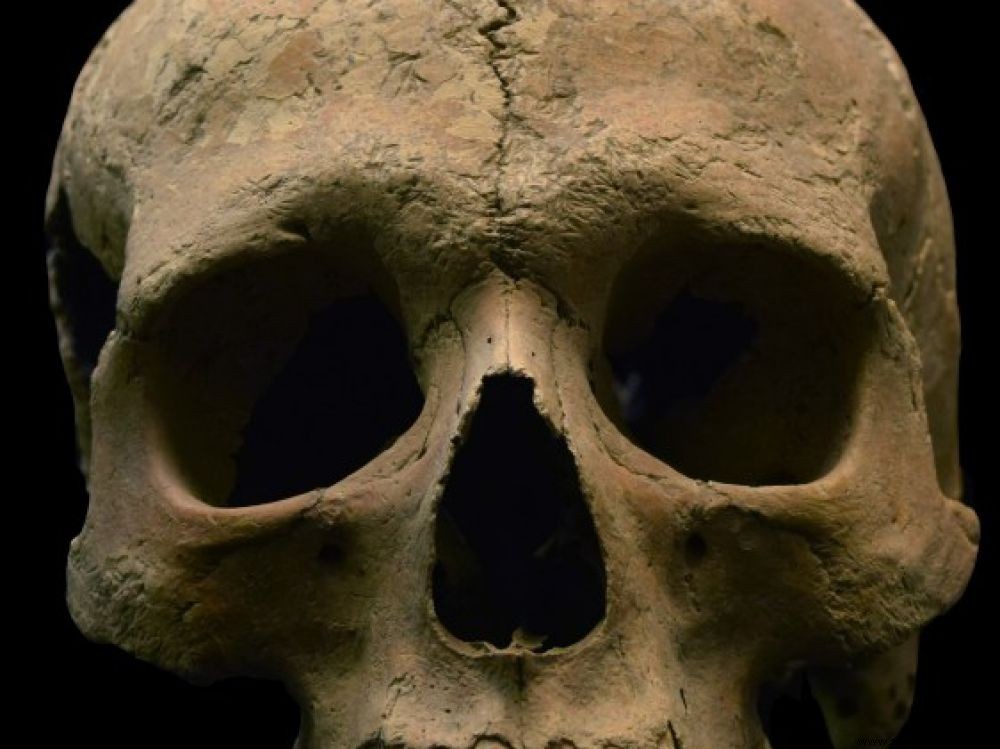Malaria or Malaria existed in Europe 2000 years ago, as genetic analyzes carried out on ancient inhabitants found in Roman cemeteries have just proved.

Traces of malaria were discovered in the dental pulp of this 35-year-old man, unearthed in the Roman cemetery of Velia, Italy.
BAD AIR. In antiquity, the "mal aria was that "bad air" that should not be breathed. The foul vapors rising from the stagnant waters surrounding Rome were thought to cause this terrible swamp disease, it was thought at the time… Greek physicians Hippocrates (460 – 370 BC) and Galen (129-199), or the Roman Celsus (25 BC – 54 AD) referred to the famous deadly "third" or "quarte" fevers, which were caught towards the end of summer. But what fevers were they? Apart from indirect, historical or epigraphic sources, concrete proof of the presence of this pathology in Roman sites had never been produced. Even less the precise detection of the pathogen at their origin.
But it is now done. A scientific team from the Center for Ancient DNA at McMaster University near Hamilton (Canada), led by paleogeneticist Hendrik Poinar, has indeed analyzed the remains of 58 adults and 10 children from three Italian necropolises from the 1 sup> er at IV th century CE:Isola Sacra, cemetery associated with Portus Romae , the ancient port of Rome located 25km from the city; Velia, a small port town in southwestern Italy; and Vagnari, a rural town in the south-east. Published in Current Biology , genetic analyzes of mitochondrial DNA (mtDNA) fragments taken from dental pulp revealed the presence of Plasmodium falciparum, in two individuals. the pathogen that causes malaria. This would be the first direct evidence of the presence of this parasitic disease in Imperial Rome, according to Hendrik Poinar's team.
Surprisingly, no trace of malaria was found in the human samples from the cemetery of Portus Romae , which the researchers expected to encounter. “Malaria-carrying bodies may not yet have been discovered , explains bioanthropologist Stephanie Marciniak, of McMaster University, one of the project leaders joined by Sciences et Avenir. One of the notable results of this work is to have been able to prove that malaria potentially played an important role in ancient communities living in southern Italy, whether they lived in a port or in a rural town ".
That wouldn't explain the fall of Rome!
However, the specialist specifies:"These results can in no way be extrapolated to explain that the end of the Roman imperial period was due to a generalized catastrophe caused by this parasite! ". Researchers now want to know how this parasite spread in the ancient world. These results could be useful to understand the evolution of Plasmodium falciparum over the past two millennia, with more than 214 million victims each year worldwide.
Malaria today
If malaria in its Plasmodium falciparum form was already devastating in the Roman Empire, it is still the case today in sub-Saharan Africa. This disease is transmitted to humans through the bites of infected female Anopheles mosquitoes. Although its incidence has decreased by 37% since 2000, it kills nearly 438,000 people each year, according to 2015 figures from the Centers for Disease Control and Prevention (CDC) in Atlanta (United States). The identification of the haematozoa of malaria was made 136 years ago in Constantine, Algeria, by the French military doctor and parasitologist Alphonse Laveran, Nobel Prize in Medicine in 1907.
.
